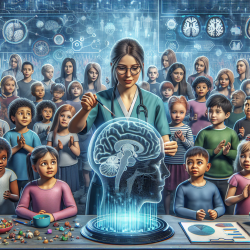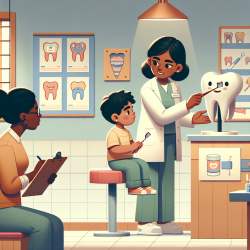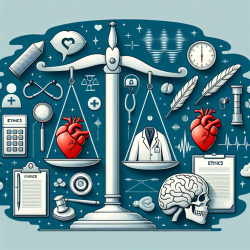Introduction
Migraines are not just an adult affliction; they significantly impact children, affecting their cognitive development and quality of life. Recent research, such as the study on "Early alterations of cortical thickness and gyrification in migraine without aura," provides crucial insights into the structural brain changes in pediatric migraine patients. This blog explores how these findings can enhance therapeutic approaches, particularly in speech-language pathology, to improve outcomes for children.
Understanding the Research
The study investigated cortical thickness (CT) and local gyrification index (LGI) in pediatric patients with migraine without aura. It found notable differences in brain structure between these patients and healthy controls. Specifically, it highlighted decreased LGI in the left superior parietal lobule and supramarginal gyrus, and differences in CT related to age and gender among migraine patients.
Implications for Practitioners
These findings underscore the importance of early and tailored interventions. For speech-language pathologists, understanding these structural differences can inform the development of customized therapy plans. Here are some actionable insights:
- Targeted Cognitive Therapy: The decreased gyrification in areas related to executive functions suggests a need for cognitive therapies that enhance these skills in children with migraines.
- Gender-Specific Approaches: With female patients showing decreased CT in auditory areas, therapies could incorporate auditory processing exercises to mitigate phonophobia and enhance auditory discrimination.
- Age-Sensitive Interventions: Recognizing that older children with migraines exhibit different cortical changes, therapy can be adjusted to focus on maintaining cognitive and sensory processing skills as they age.
Encouraging Further Research
While the study provides valuable insights, it also opens avenues for further research. Practitioners are encouraged to consider the following:
- Longitudinal Studies: More research is needed to understand the long-term effects of cortical changes in pediatric migraine patients and how these affect language and cognitive development.
- Interdisciplinary Collaboration: Collaborating with neurologists and psychologists can provide a more comprehensive approach to managing pediatric migraines.
- Innovative Therapies: Exploring new therapeutic techniques, such as neurofeedback or virtual reality, could offer additional benefits for children with migraines.
Conclusion
The study on cortical changes in pediatric migraine patients highlights the need for data-driven, individualized therapy plans. By integrating these insights into practice, speech-language pathologists can play a pivotal role in enhancing the quality of life for children affected by migraines.
To read the original research paper, please follow this link: Early alterations of cortical thickness and gyrification in migraine without aura: a retrospective MRI study in pediatric patients.










